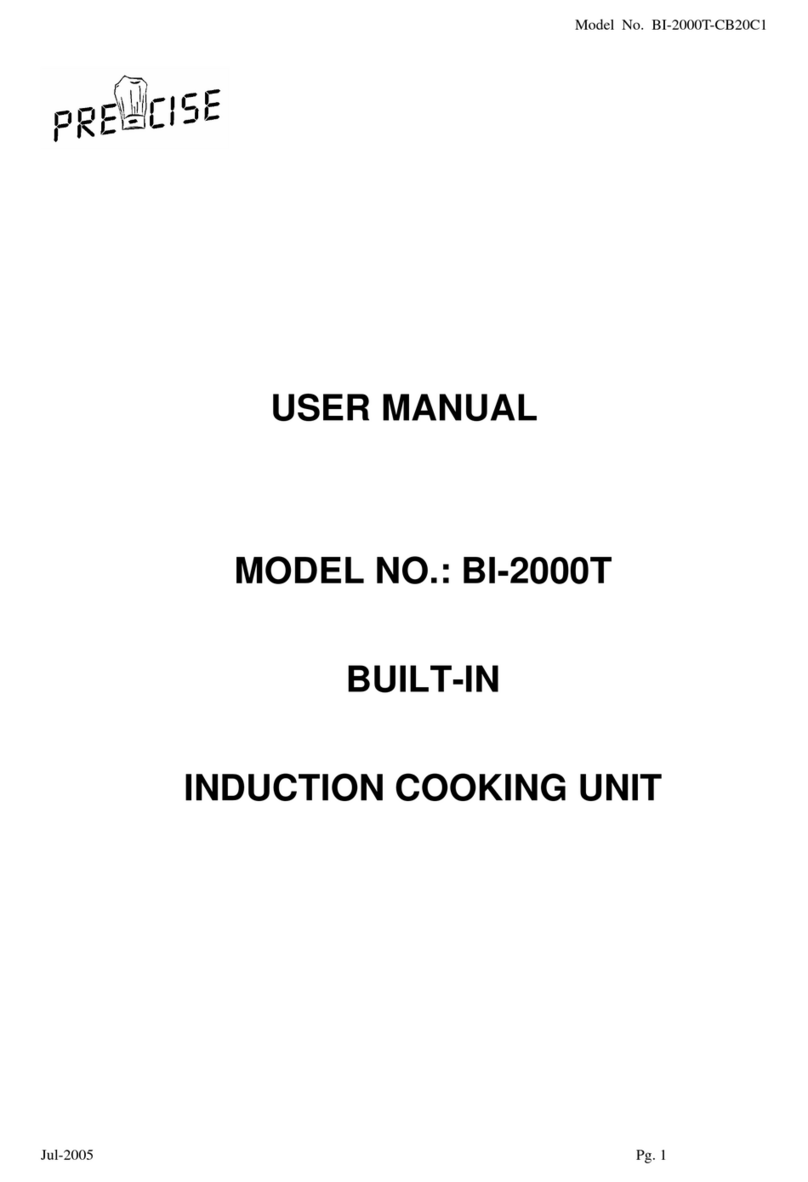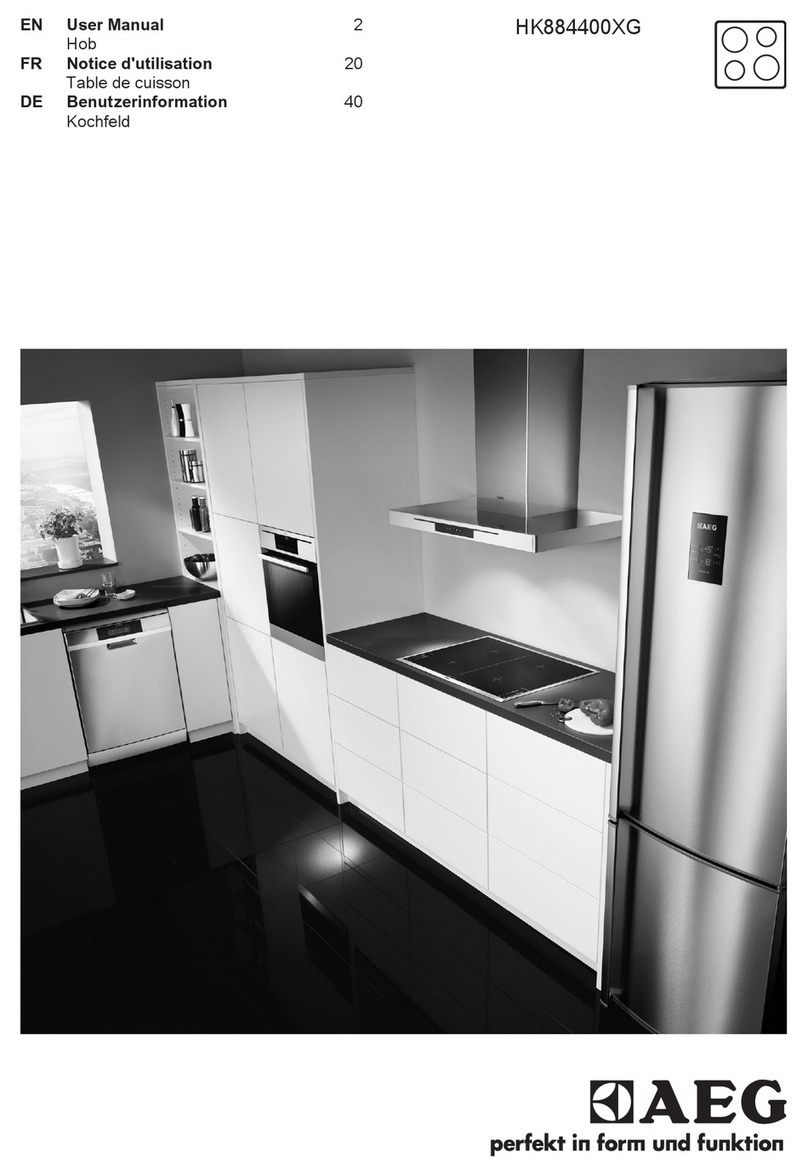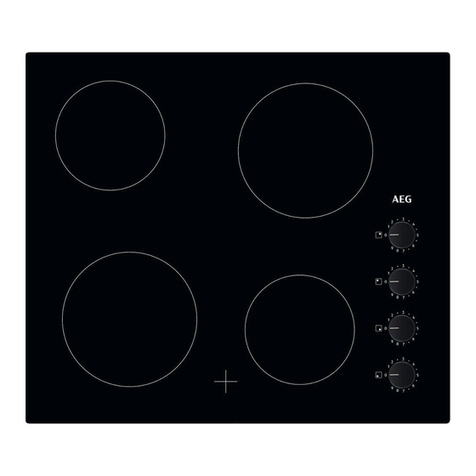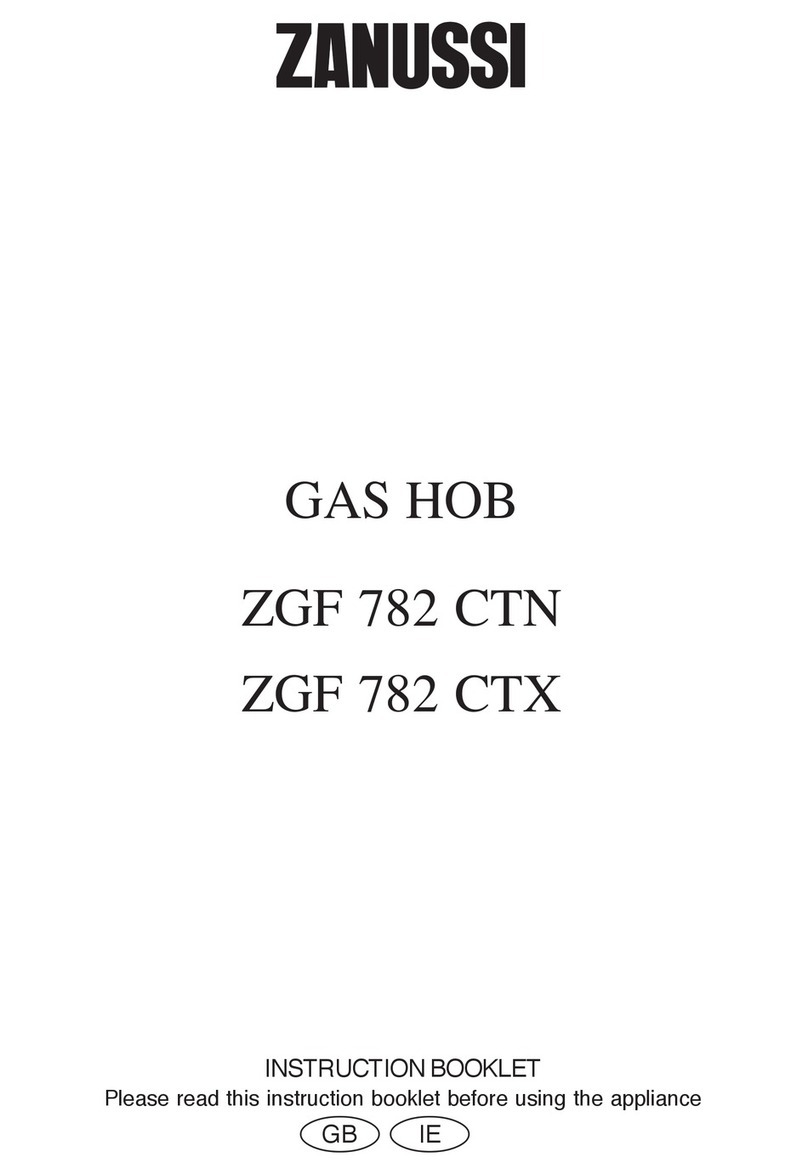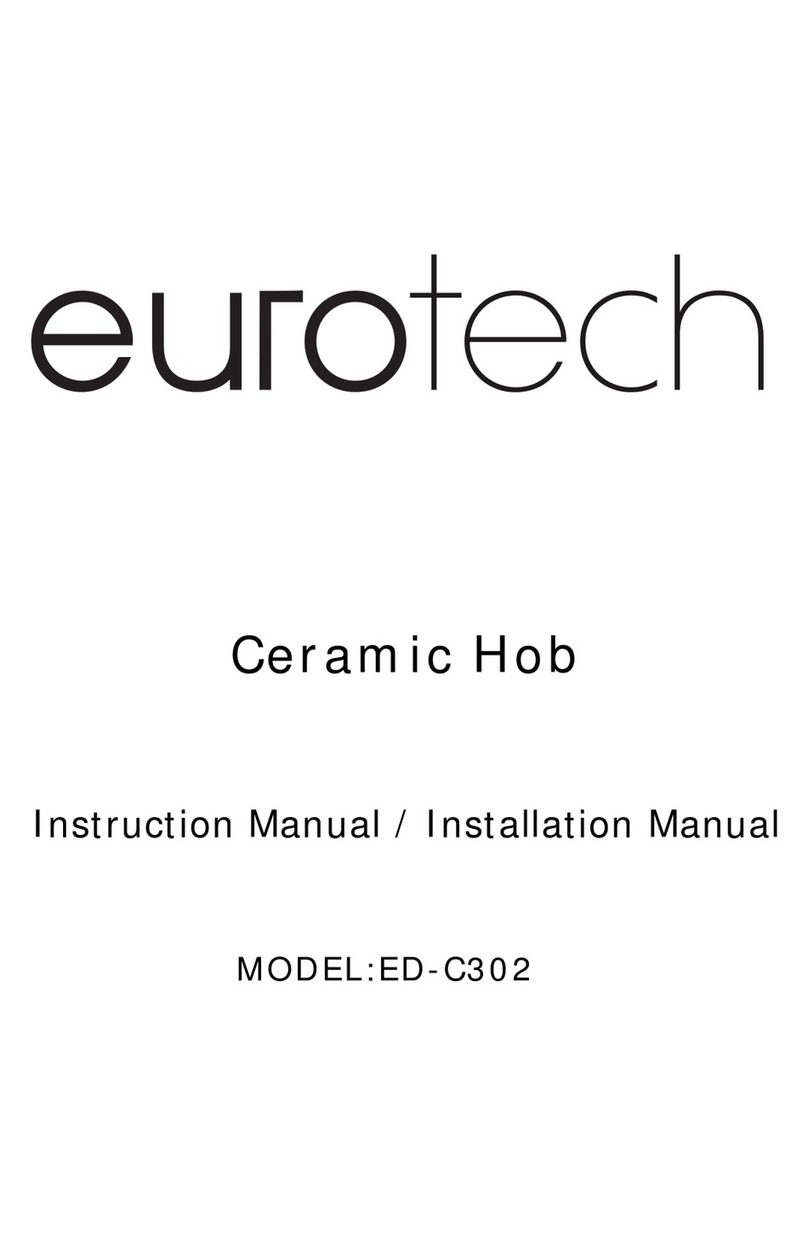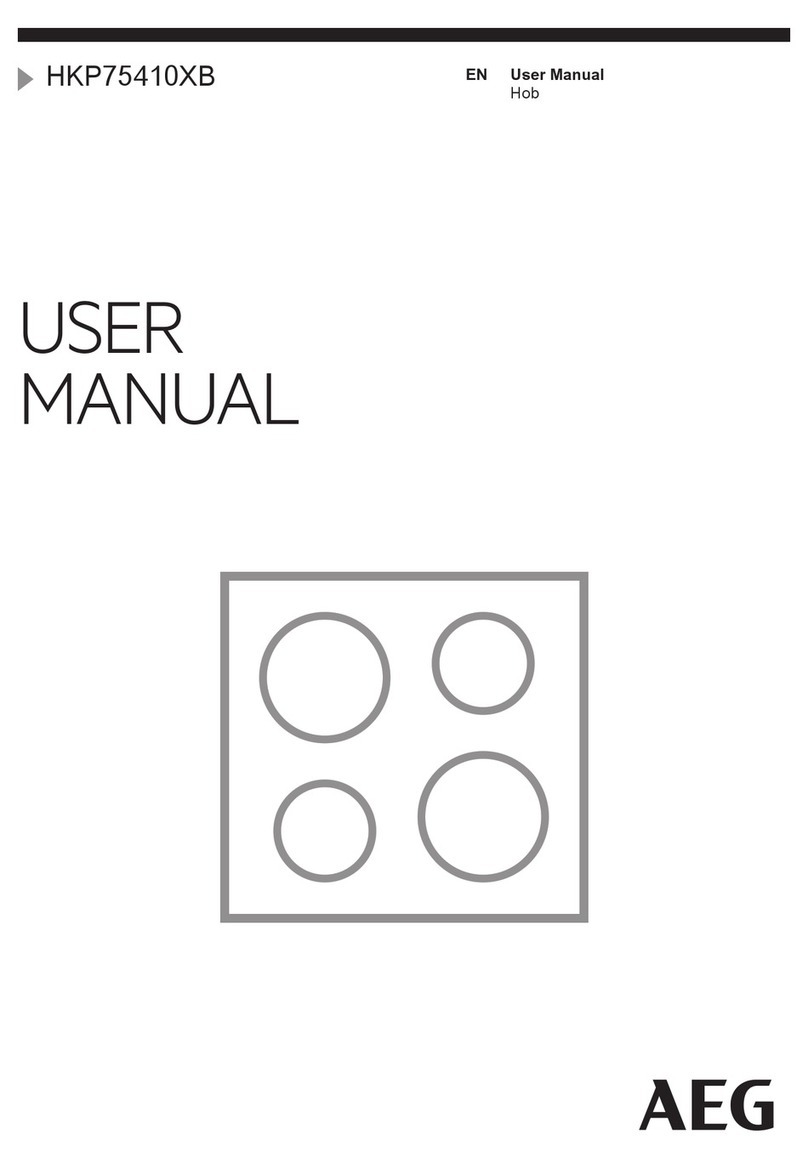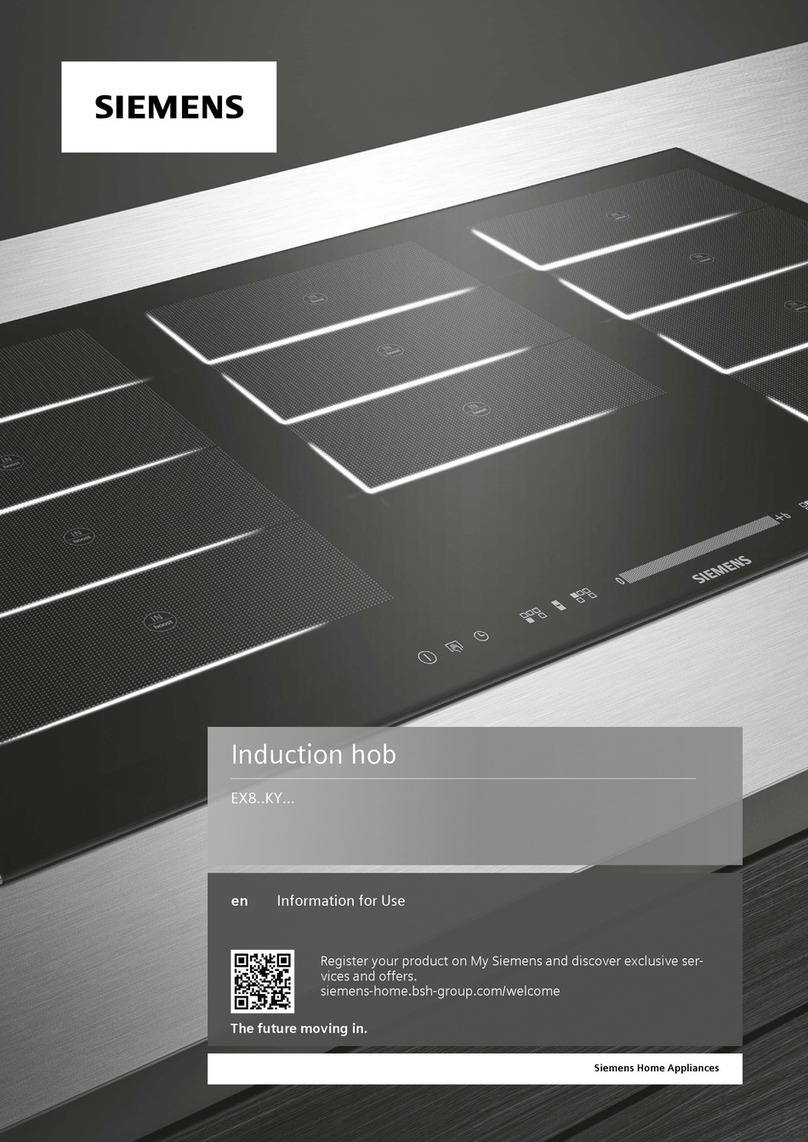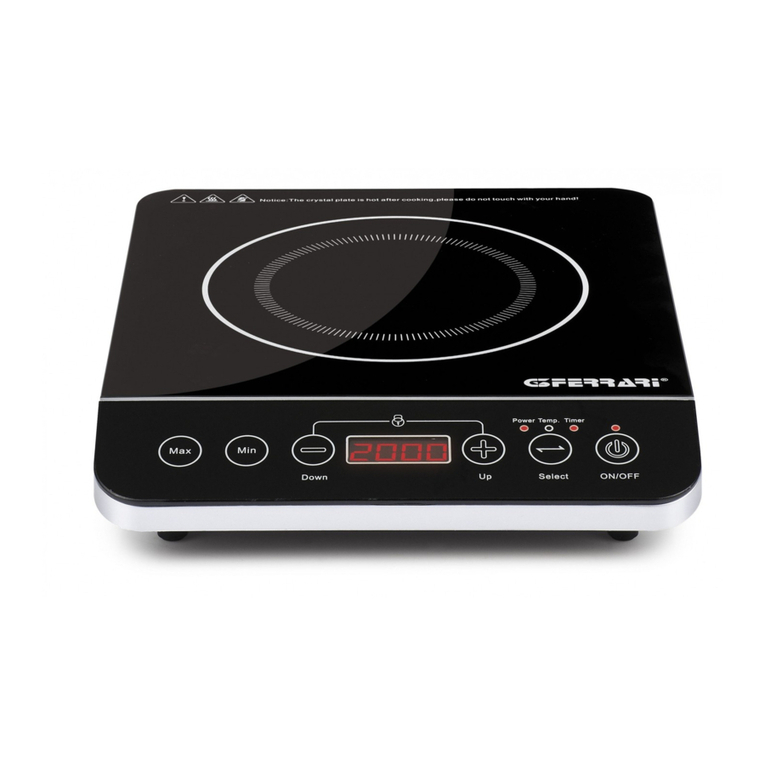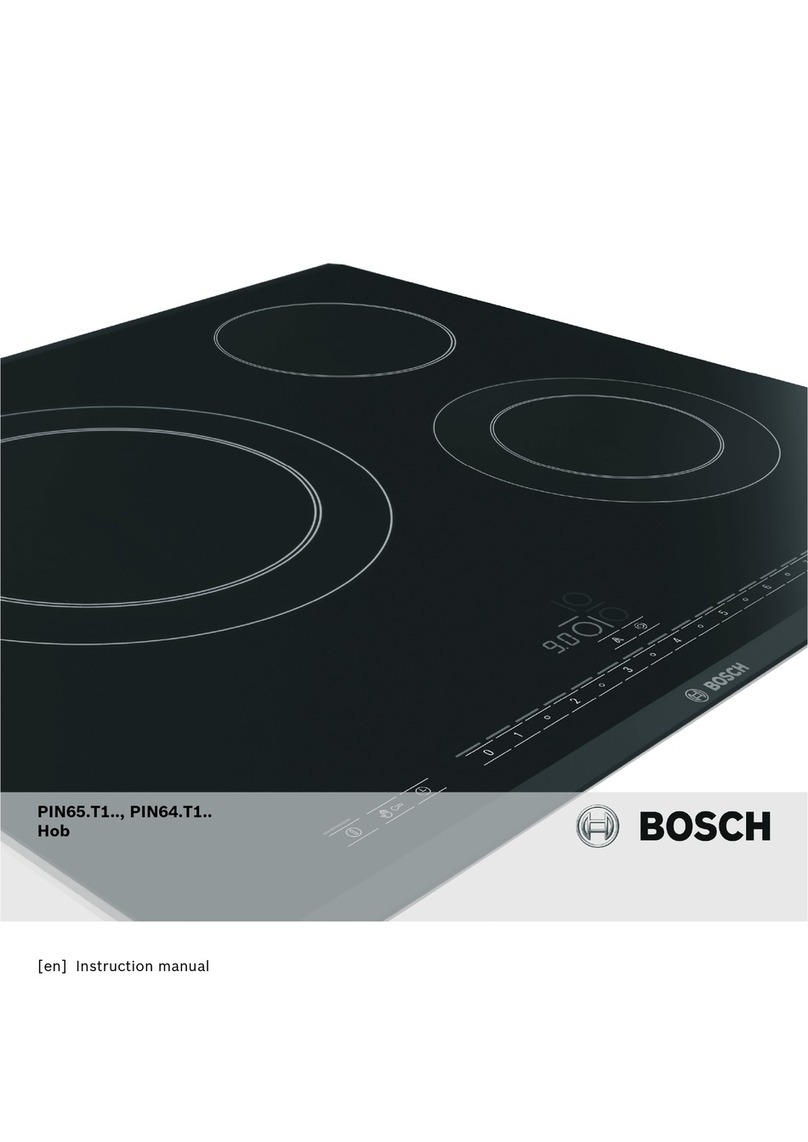
en-us Before you begin
8
Before you begin
2 Before you begin
Before you begin
This Installation Guide covers several models. All graphics
are representative. Your appliance may vary in appear-
ance and features.
2.1 Parts included
After unpacking all the parts, check for any damage in
transit and for completeness of delivery.
¡Rangetop
¡STAR® burner caps (1 per burner)
¡Burner grates (2 or 3, depending on model)
2.2 Tools and parts needed
Prepare these tools and accessories before you start to in-
stall your appliance.
Tools
¡Pencil
¡Measuring tape
¡Level
¡Safety gloves
¡T20 star bit screwdriver
¡⁷⁄₁₆" (11mm) box end wrench or ratchet and socket
¡12" (305mm) adjustable wrench
Additional parts needed
¡Pipe compound/tape
¡¾" (19mm) Flex line
NOTICE:
There is a possibility to discolor the back wall under cer-
tain cooking conditions.
2.3 Power requirements and grounding
The outlet must be properly grounded in accordance with
all applicable codes.
2.4 Ventilation requirements
WARNING
The appliance should not be installed with a ventilation
system that blows air downward toward the burners. This
type of ventilation system may cause ignition and combus-
tion problems with the gas cooking appliance resulting in
personal injury or unintended operation.
¡Refer to the “Ventilation Planning Guide” for approved
ventilation combinations.
¡It is strongly recommended that this appliance be in-
stalled in conjunction with a Thermador vent hood. Due
to the high heat capability of this appliance, particular
attention should be paid to the hood and duct work in-
stallation to assure it meets local building codes.
¡Ventilation hoods and blowers are designed for use with
single wall ducting. However, some local building codes
or inspectors may require double wall ducting. Consult
local building codes and/or local agencies before start-
ing to assure that hood and duct installation will meet lo-
cal requirements.
NOTICE:
Most range hoods contain combustible components which
must be considered when planning the installation.
Preparing for the ventilation
1. Select hood and blower models.
– For wall installations, the hood width must, at a mini-
mum, equal the width of the range/rangetop. Where
space permits, a hood larger in width than the range/
rangetop may be desirable for improved ventilation
performance.
– For island installations, the hood width should over-
hang the width of the range/rangetop by a minimum
of 3'' (76 mm) on each side.
2. Consider hood placement.
– For best smoke elimination, the lower edge of the
hood should be installed 30" (762 mm) above the
range cooking surface.
– If the hood contains any combustible materials (i.e. a
wood covering), it must be installed a minimum of 36"
(914 mm) above the cooking surface.
3. Consider make-up air.
– Due to the high volume of ventilation air, a source of
outside replacement air is recommended. This is par-
ticularly important for tightly sealed and insulated
homes.
– A qualified heating and ventilating contractor should
be consulted.
Installation requirements
3 Installation requirements
Installation requirements
Read these instructions to prepare the installation space
for your appliance.
3.1 Location requirements
Ensure your installation location fulfills the following re-
quirements before you begin with the installation proce-
dure.
CAUTION
To prevent possible damage to cabinets and cabinet fin-
ishes:
▶Use only materials and finishes that will not discolor or
divide into layers.
▶Materials should be able to withstand temperatures up
to 194°F (90°C).
▶Heat and moisture resistant adhesive must be used if
the product is to be installed in laminated cabinetry.
▶Check with the product manufacturer to ensure materi-
als meet these requirements.
Specifications:
¡To ensure professional results, the cabinet and counter-
top openings should be prepared by a qualified cabinet
worker.
¡The gas and electrical supply must be located in an
area that is accessible without requiring removal of the
rangetop.
¡The same clearances apply to island installations, ex-
cept for the overhead cabinets, which must have a
space wide enough to accept the island hood.
¡See the Ventilation Planning Guide for recommended
hood options. Due to the high heat of the burners, in-
stalling a microwave oven with a ventilation system over
the appliance is not recommended on anything other
than the 30'' 5–burner model. Refer to the OTR manu-
facturer’s installation manual for clearances.











